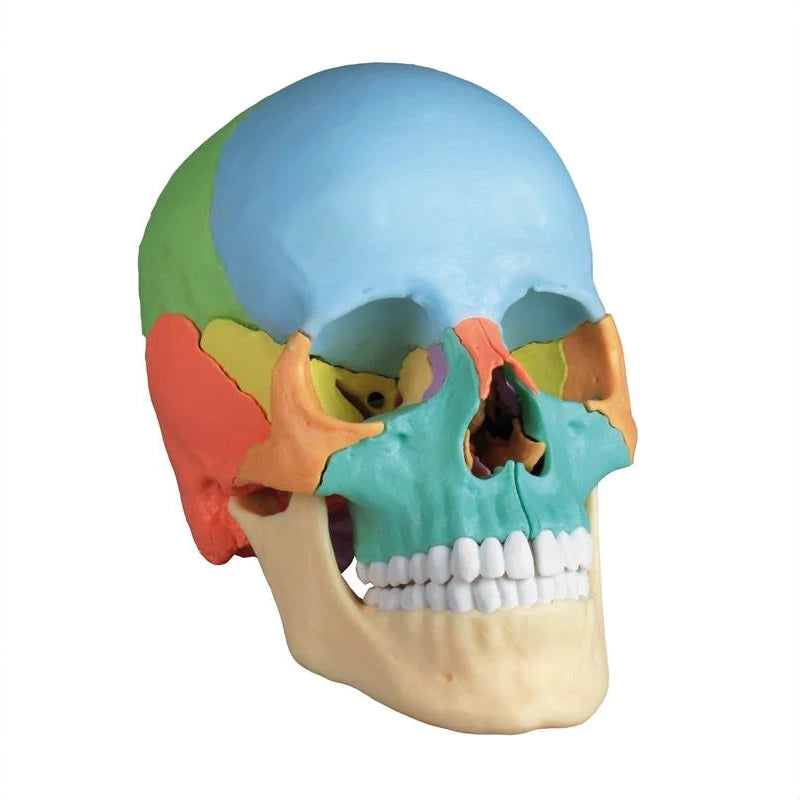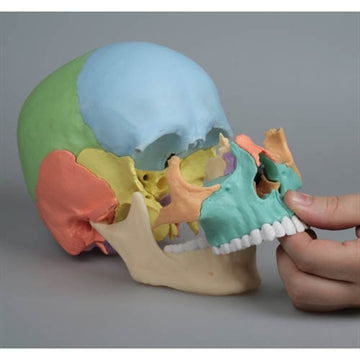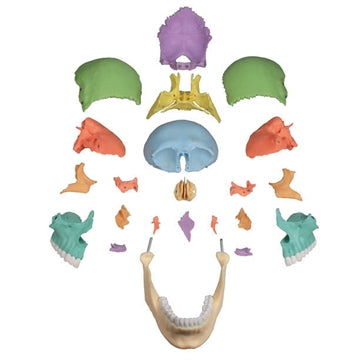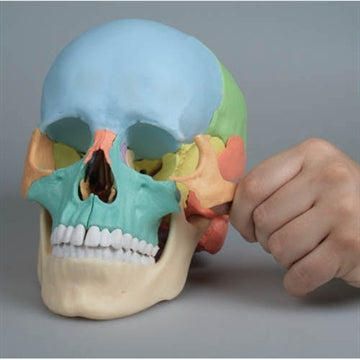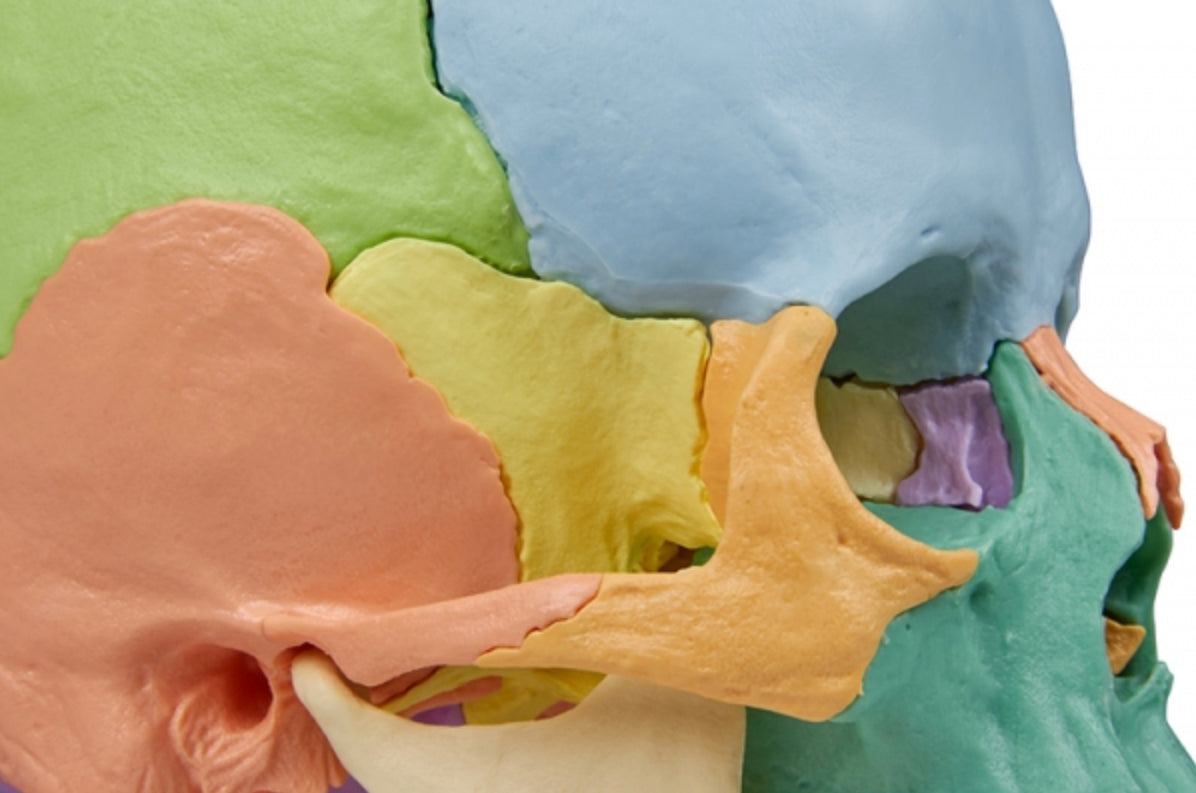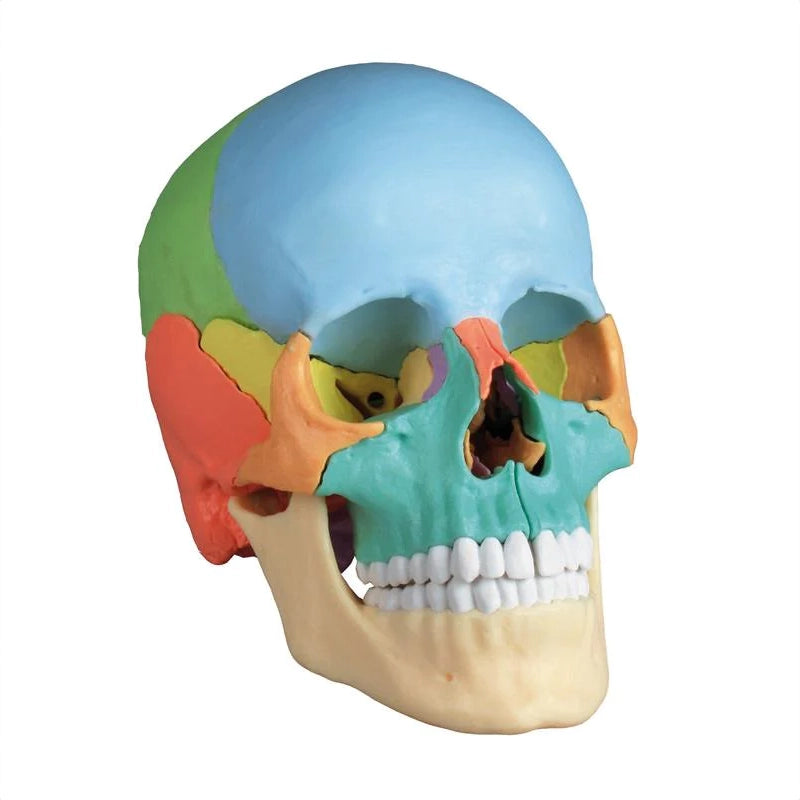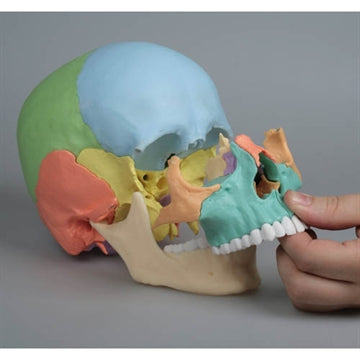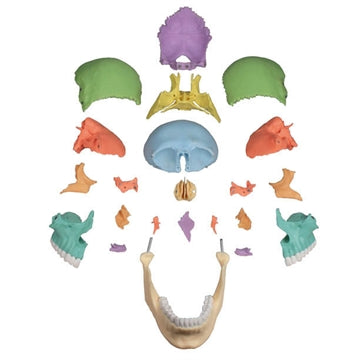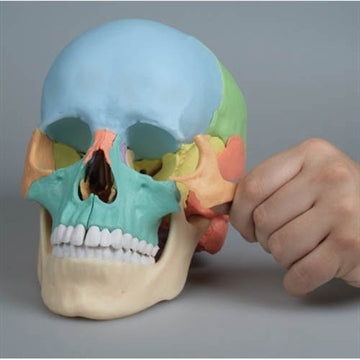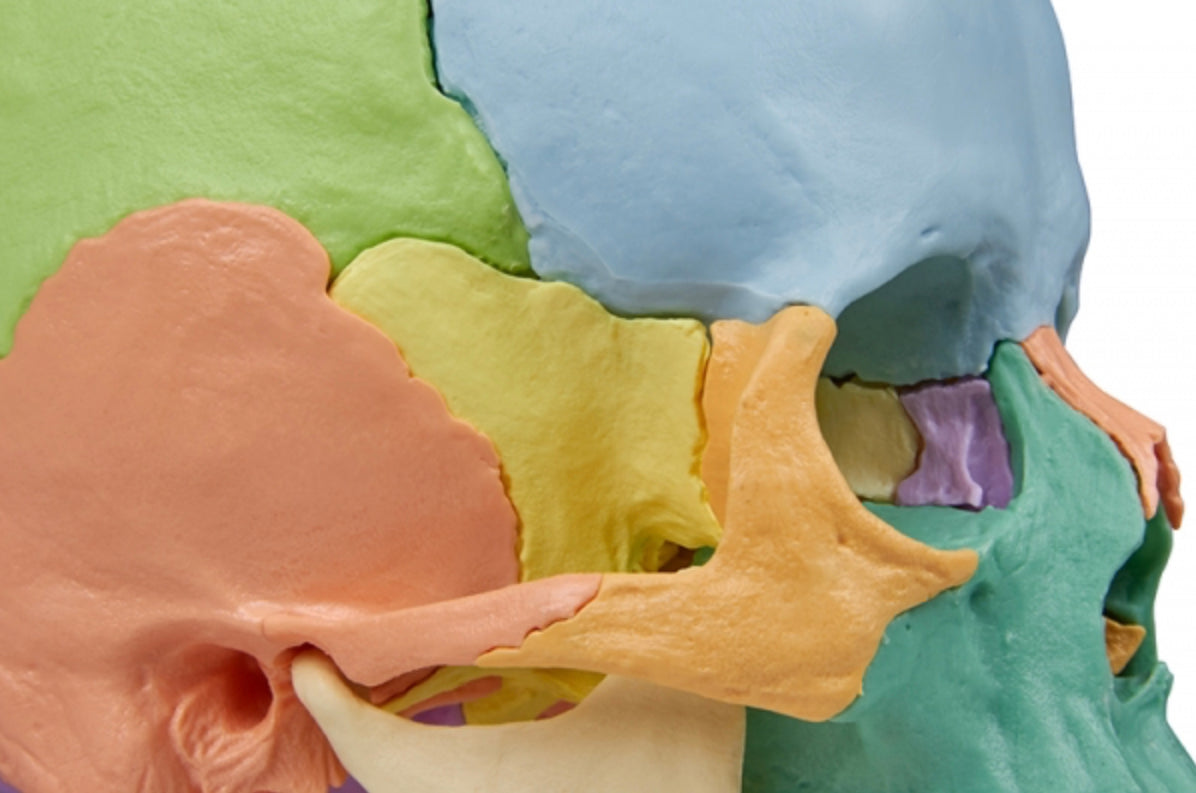SKU:EA1-4708
Skull model assembled with magnets in 22 parts - colored version
Skull model assembled with magnets in 22 parts - colored version
ATTENTION! This item ships separately. The delivery time may vary.
Couldn't load pickup availability
Are you looking for a model of the adult skull that makes it easy to understand the complex relationships that the individual skull bones have to each other? This model is not only easy to take apart, but also provides an understanding of the design of the individual skull bones.
The skull is created as a natural cast of the skull of an adult European man and is therefore lifelike in size. The skull weighs 0.8 kg and can be separated into 22 separate parts. This makes it possible to study the individual skull bones very closely, while providing a good understanding of the relationships between the individual bones when the skull is reassembled.
As something special, this model is extremely easy to assemble and disassemble, as the individual bone parts are held together by magnets instead of nails.
The 22 bones are each marked with their own color to easily distinguish them from each other. In total there are 8 paired bones - two identical bones are marked with the same color. A total of 9 different colors are used.
Anatomically speaking
Anatomically speaking
Anatomically speaking, the model shows the bones of the skull and their interrelationships. Overall, the skull is divided into 2 parts:
The neurocranium, which is the braincase that encloses and protects the brain.
The viscerocranium, or facial skull, which surrounds the eye sockets and nasal cavity and bears the 32 teeth.
The skull contains many holes and channels through which vessels and nerves run to and from the brain. Many of these, but not all, are shown on this model.
The model is very suitable for forming an overview of where these holes and channels begin and end, as they will typically have their beginning on the inside of the skull, and their end on the outside of the skull - or vice versa. Because the bones that make up the top of the skull can be removed, a good understanding of the structure of the interior of the skull can be obtained.
The following bones are shown on the model:
Os parietale (left and right)
Os occipital
Us frontal
Os temporale (left and right)
Us sphenoidal
Os ethmoidal
Stomach
Os zygomaticum (left and right)
Maxilla - upper jaw with teeth (left and right)
Us palatinum (left and right)
Concha nasalis inferior (left and right)
Os lacrimale (left and right)
Us nasal (left and right)
Mandible - lower jaw with teeth
It should be noted that the hyoid bone (os hyoideum) is also included in the skull bones, but this is not included in the model.
In addition, the model shows the various sutures found between the skull bones, which in the adult are fused together.
Flexibility
Flexibility
In terms of movement, it is relevant to mention the jaw joint. The lower jaw is only held in place by magnets, so the model is not ideal for demonstrating the various movements that can be performed in the jaw joint.
If this is attempted, it requires holding a hand under the lower jaw (mandible) so that the joint head remains in the socket.
Clinically speaking
Clinically speaking
Clinically, the skull model can be used to understand specific skull deformities, such as craniosynostosis.
The model is also ideal for understanding the individual skull bones and their connections, as well as diseases, disorders and disorders in this part of the skeleton.
Share a link to this product

A safe transaction
For 19 years I have been managing eAnatomi and sold anatomical models and posters to 'almost everyone' who has anything to do with anatomi in Scandinavia and abroad. When you place your order with eAnatomi, you place your order with me and I personally guarantee a safe transaction.
Christian Birksø
Owner and founder of eAnatomi and Anatomic Aesthetics

